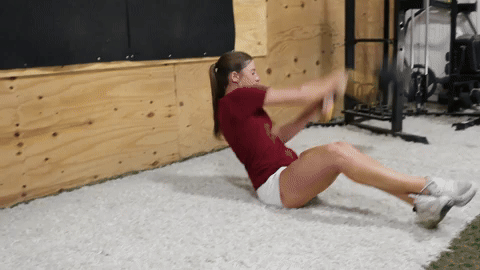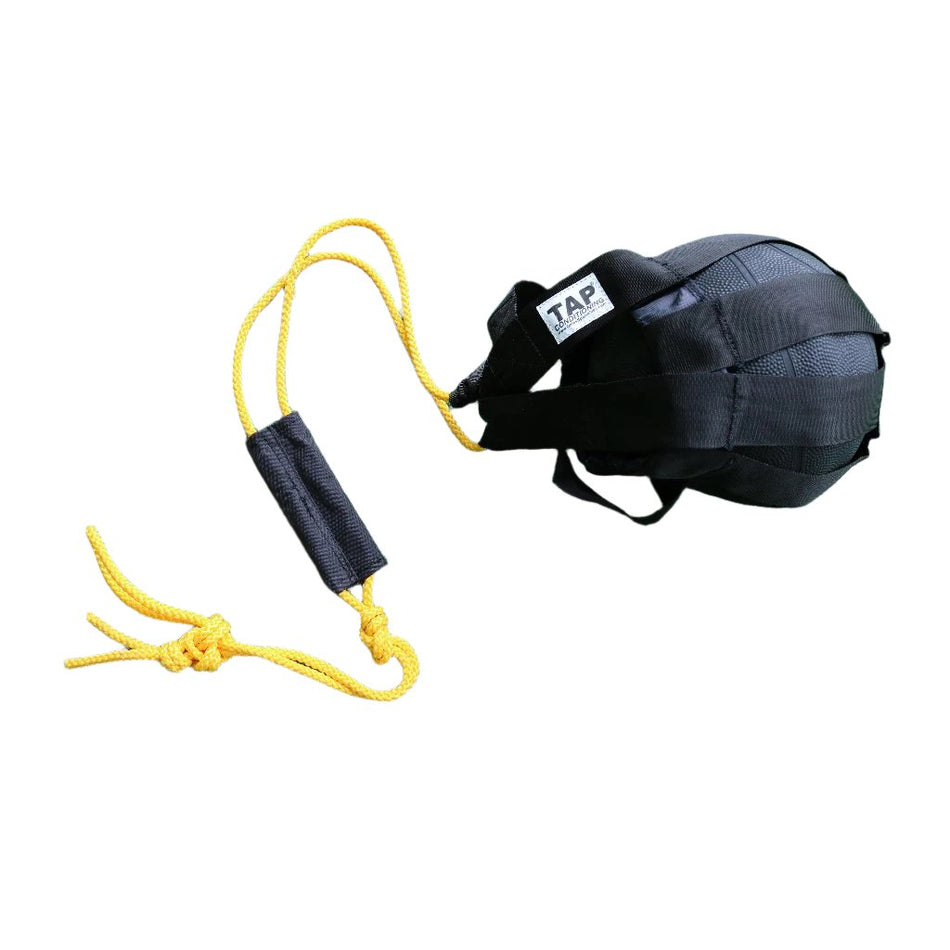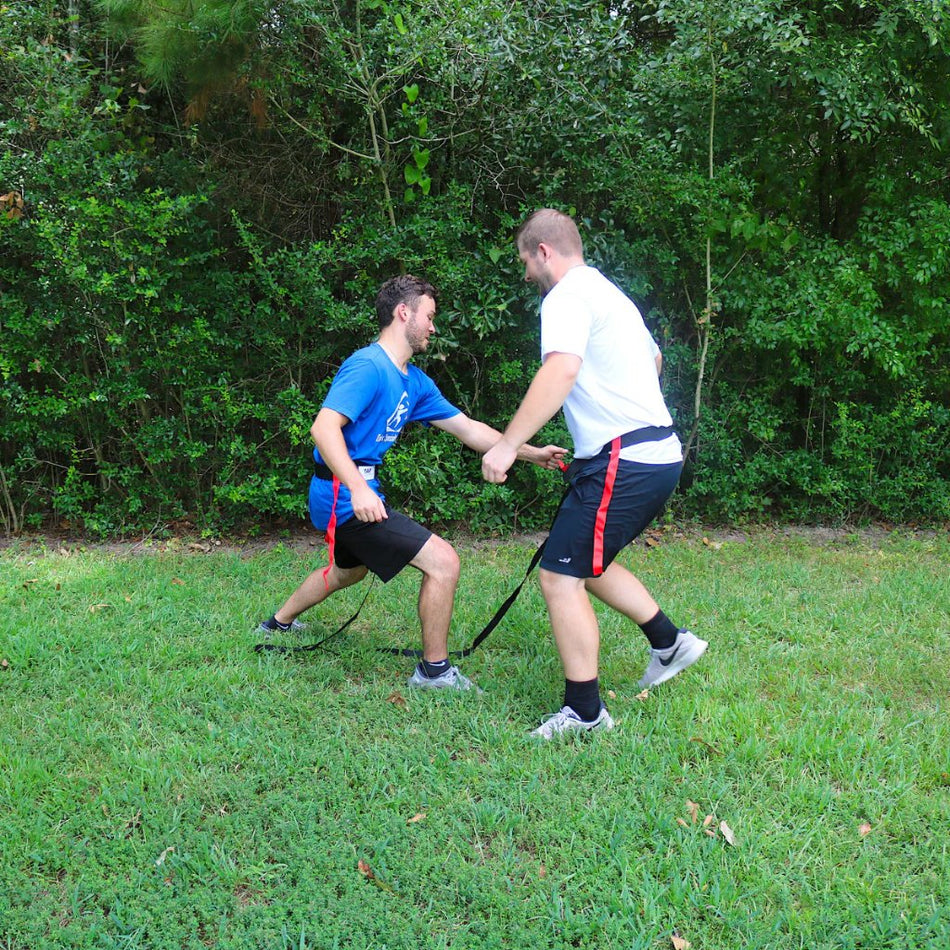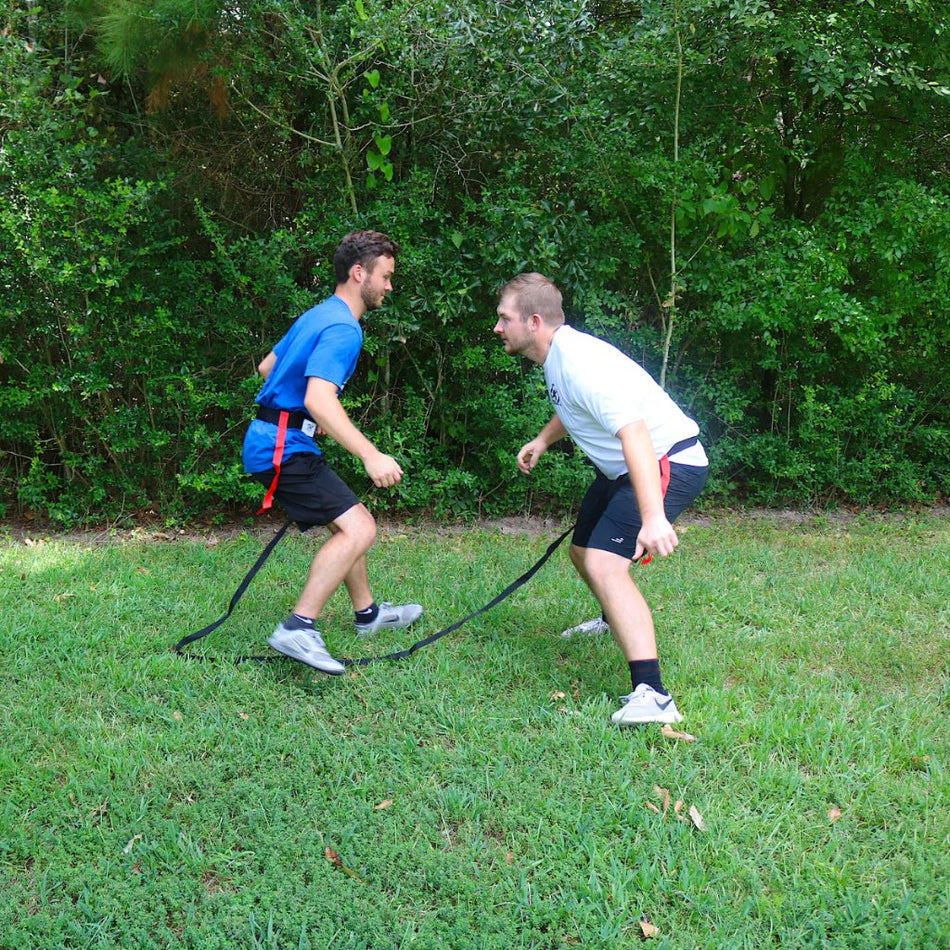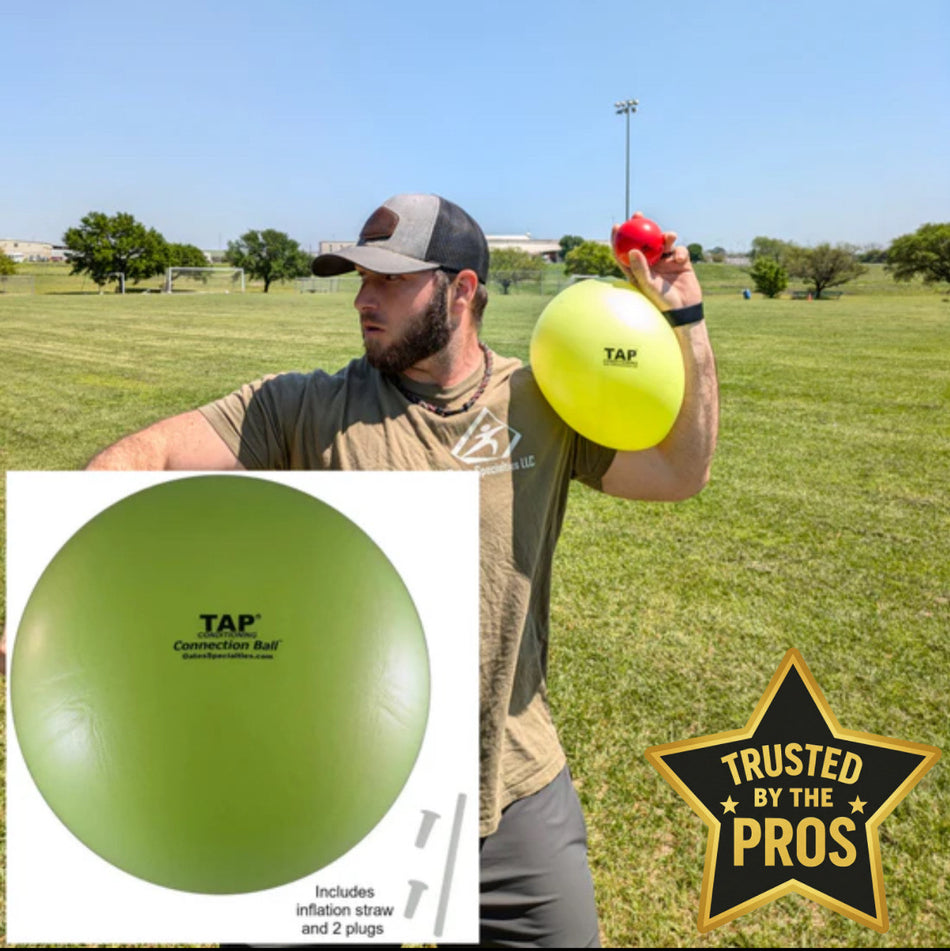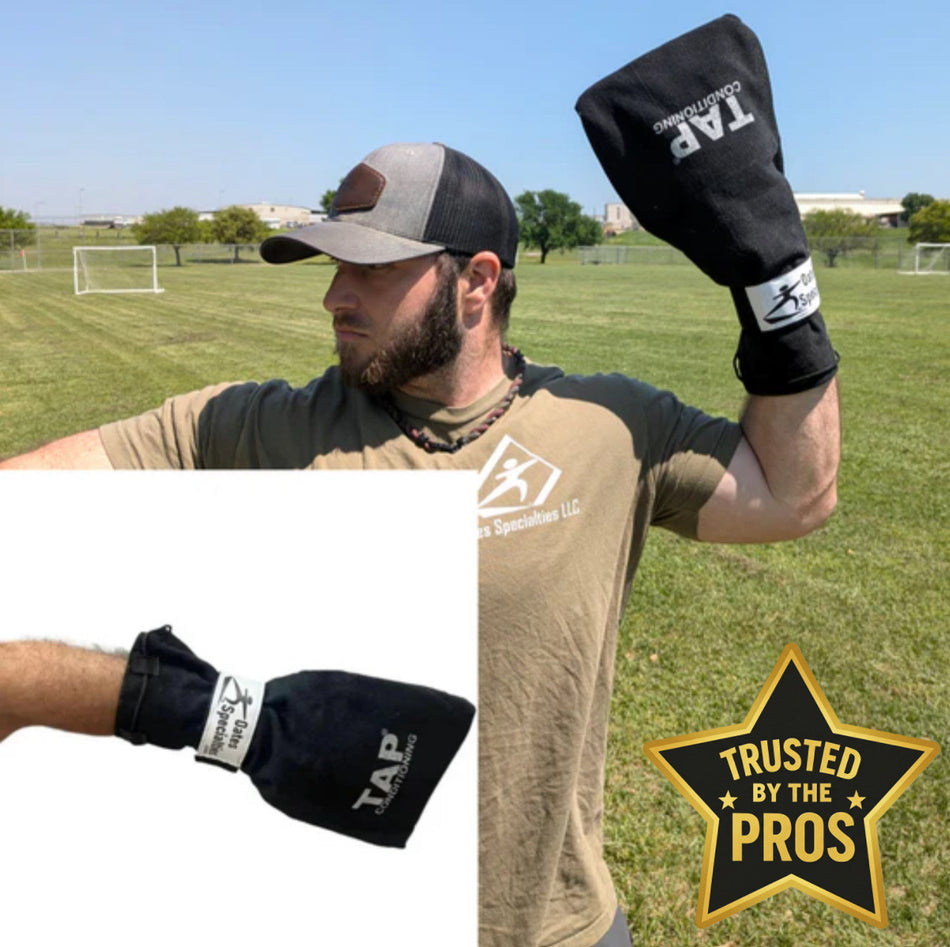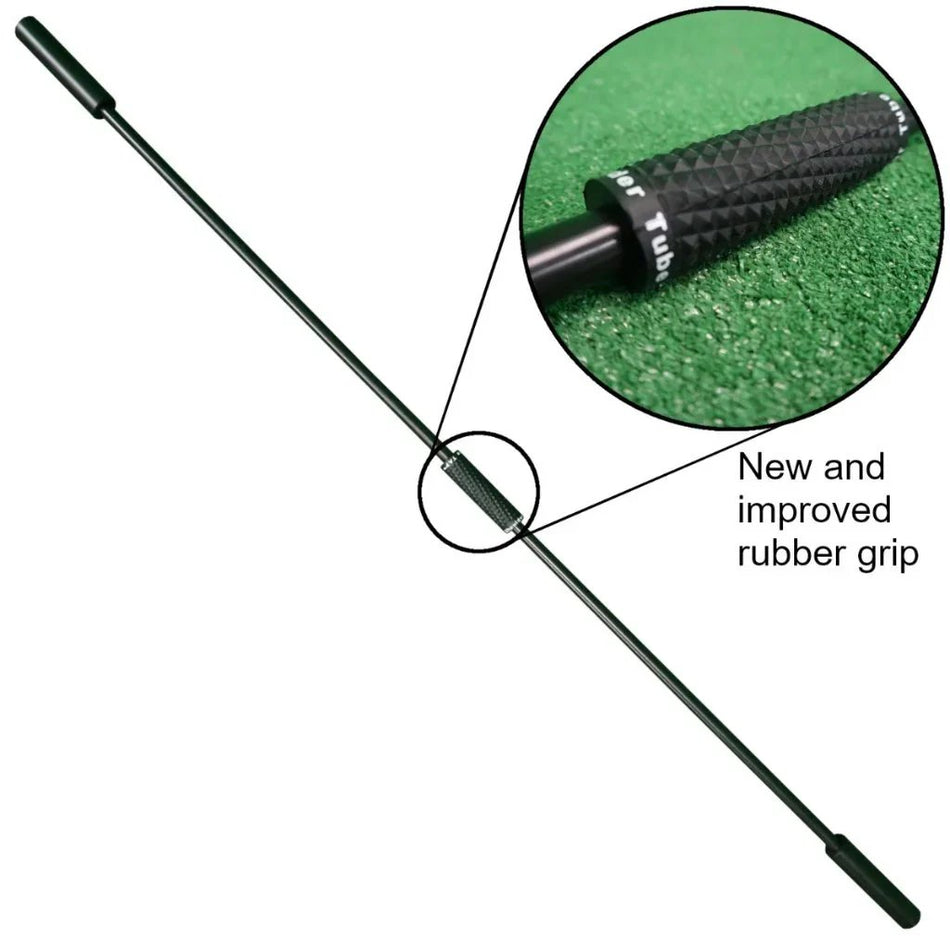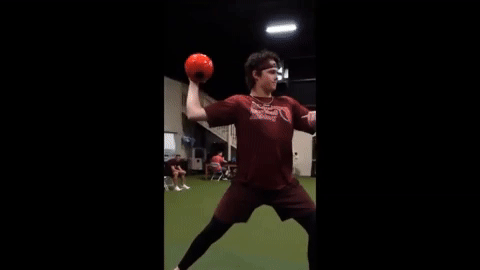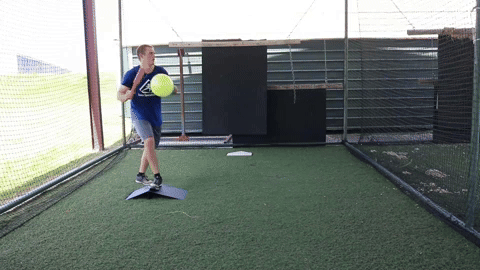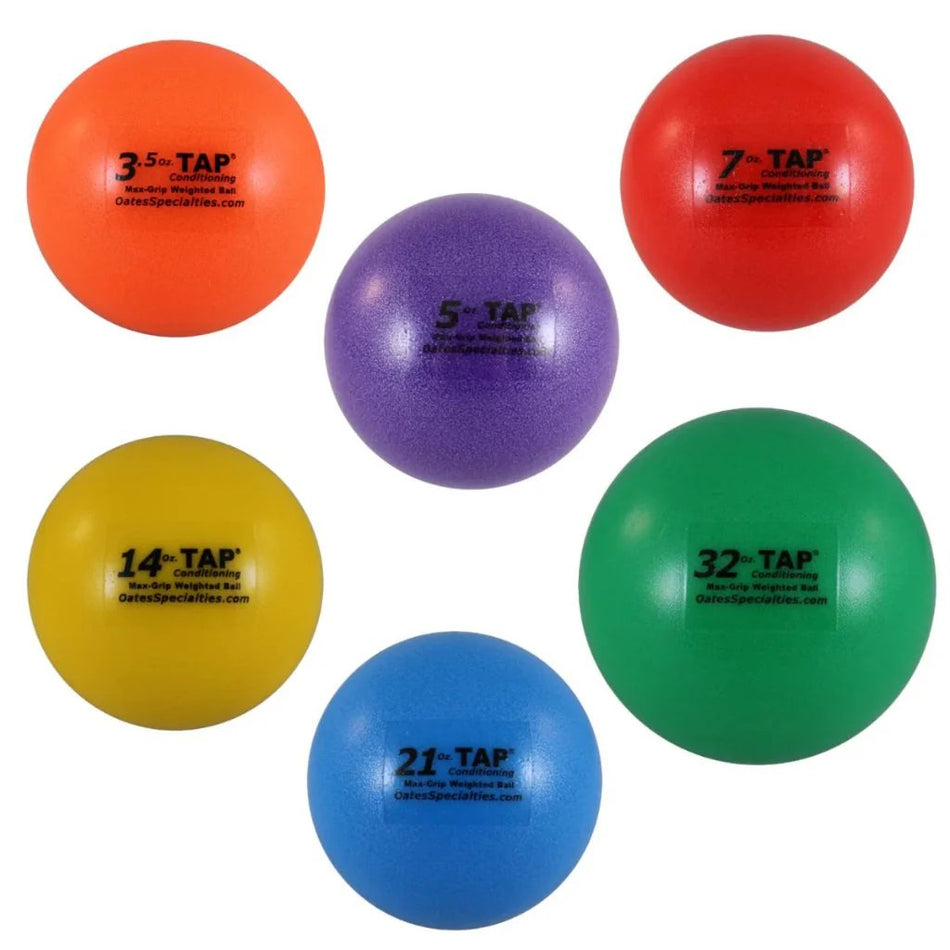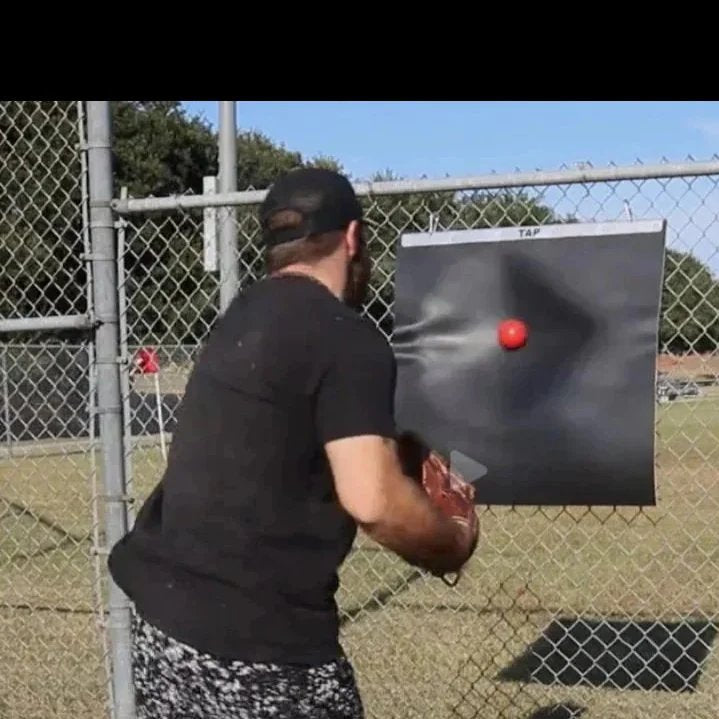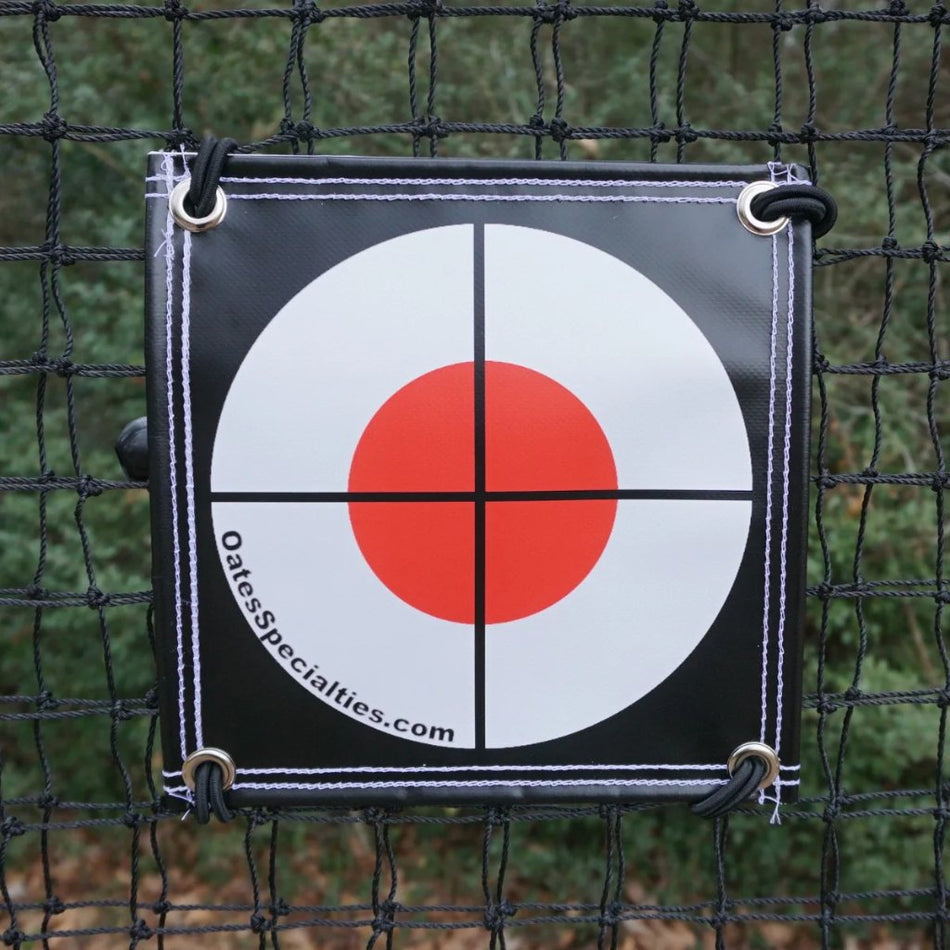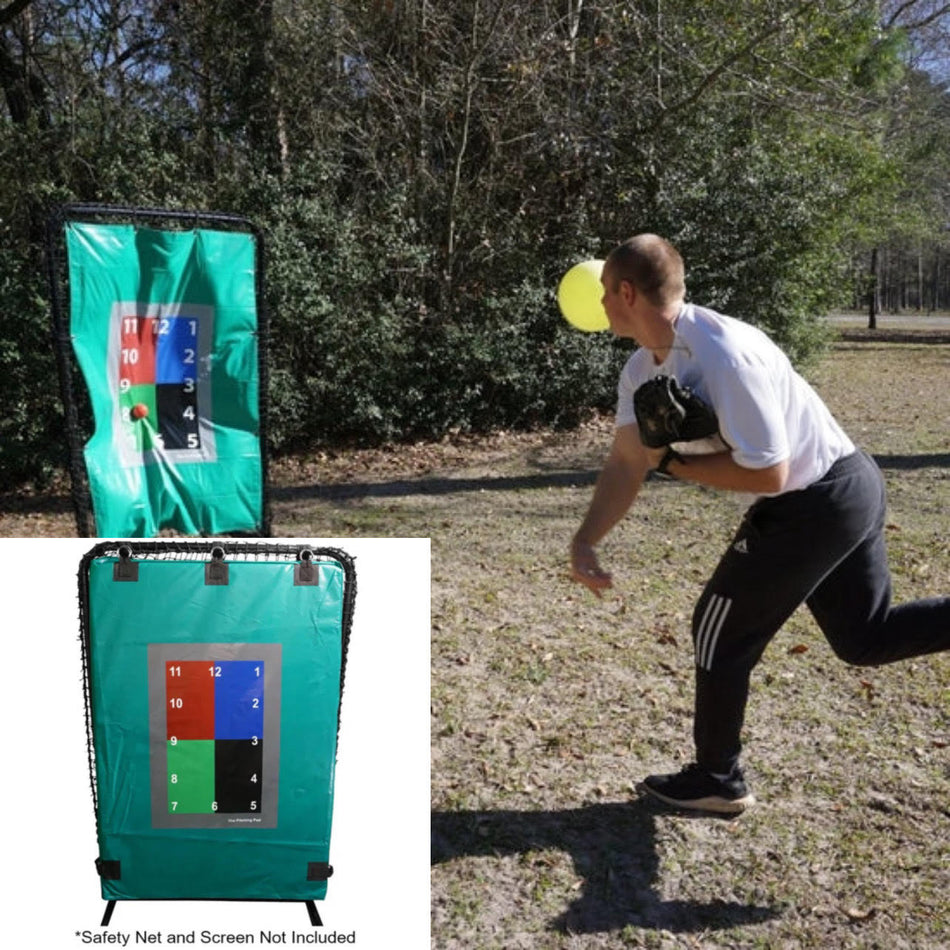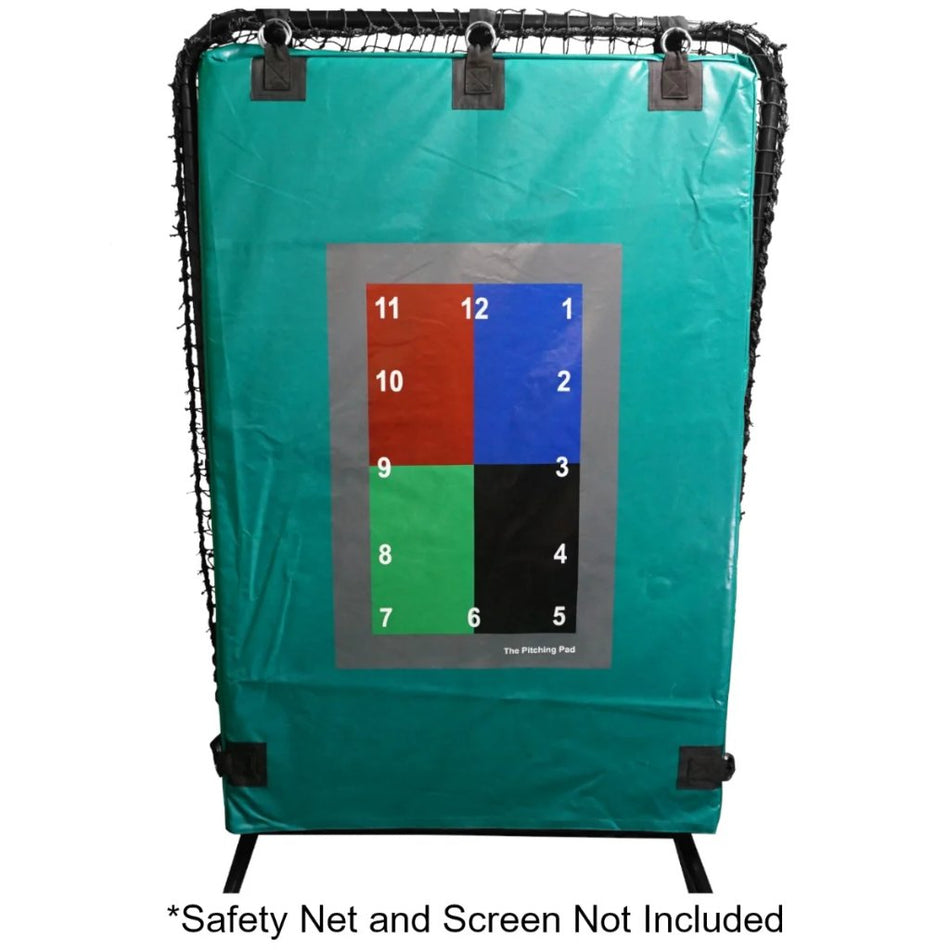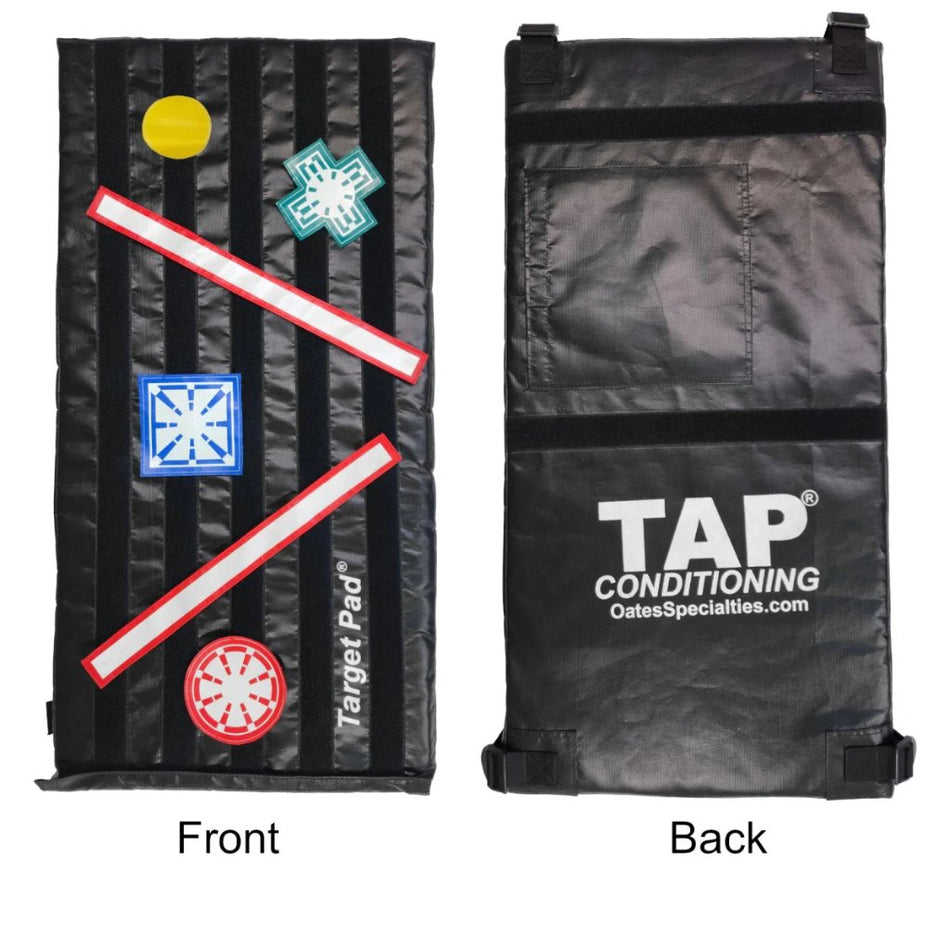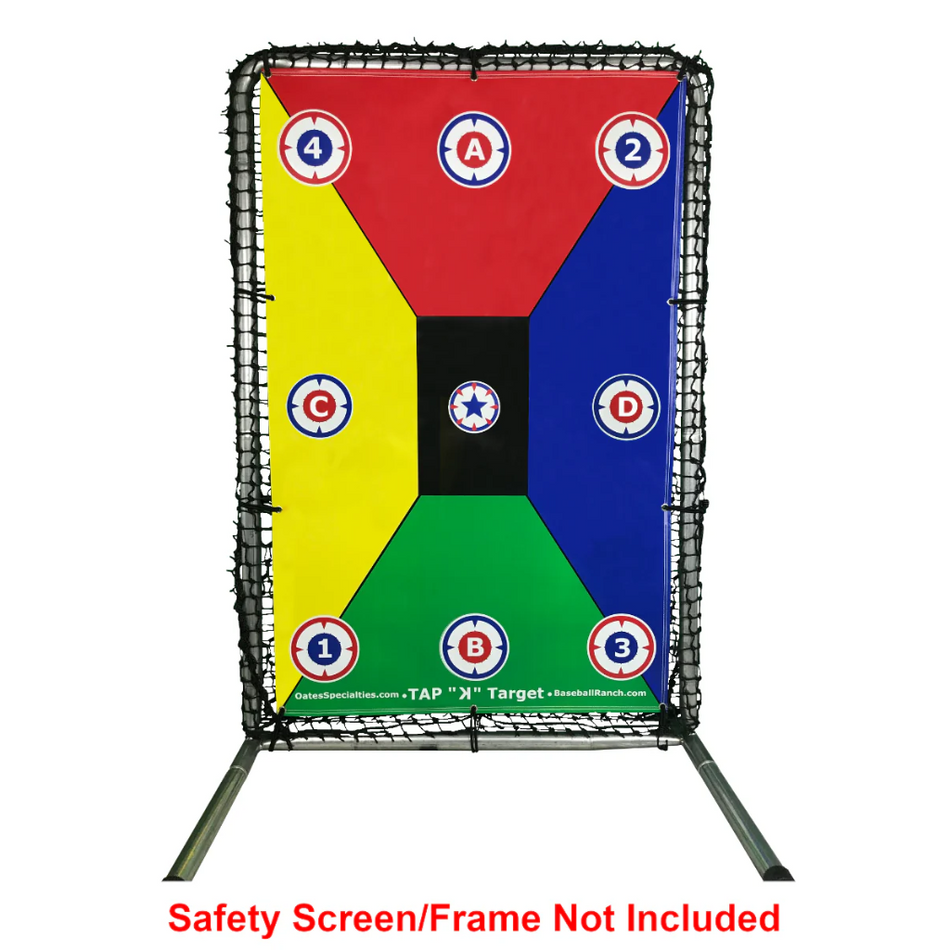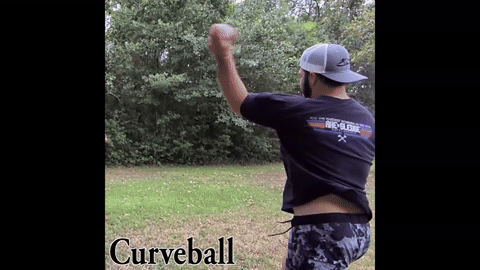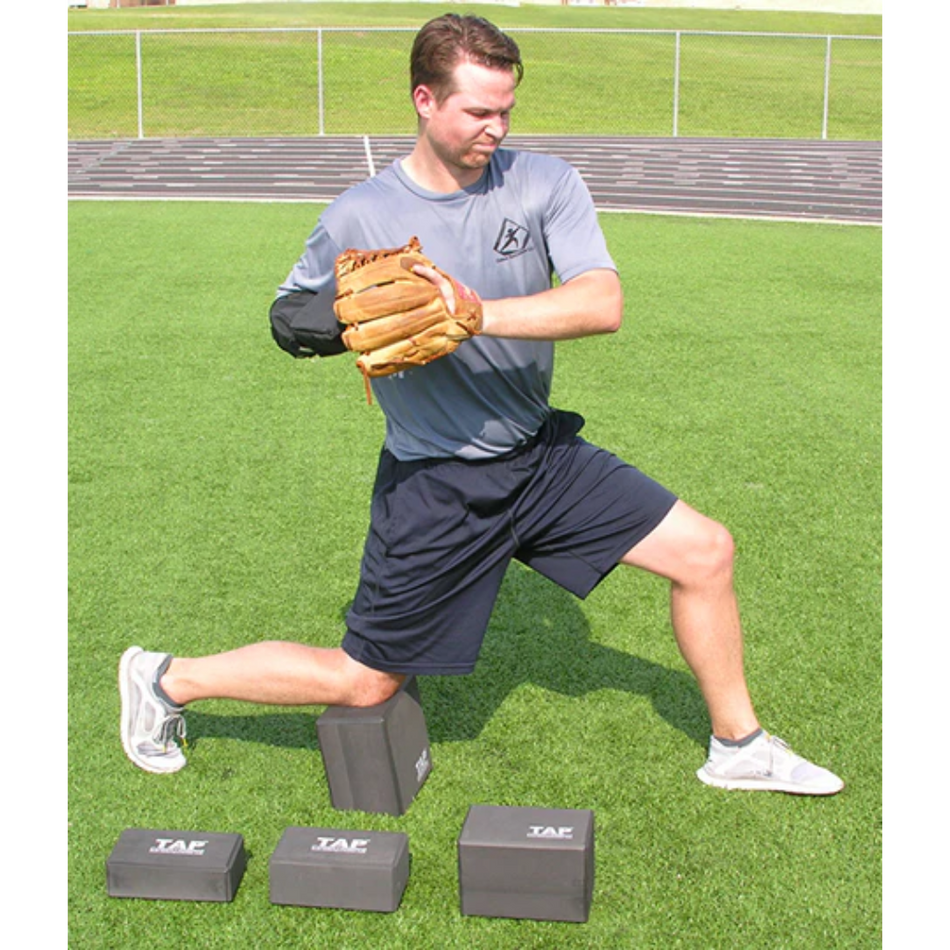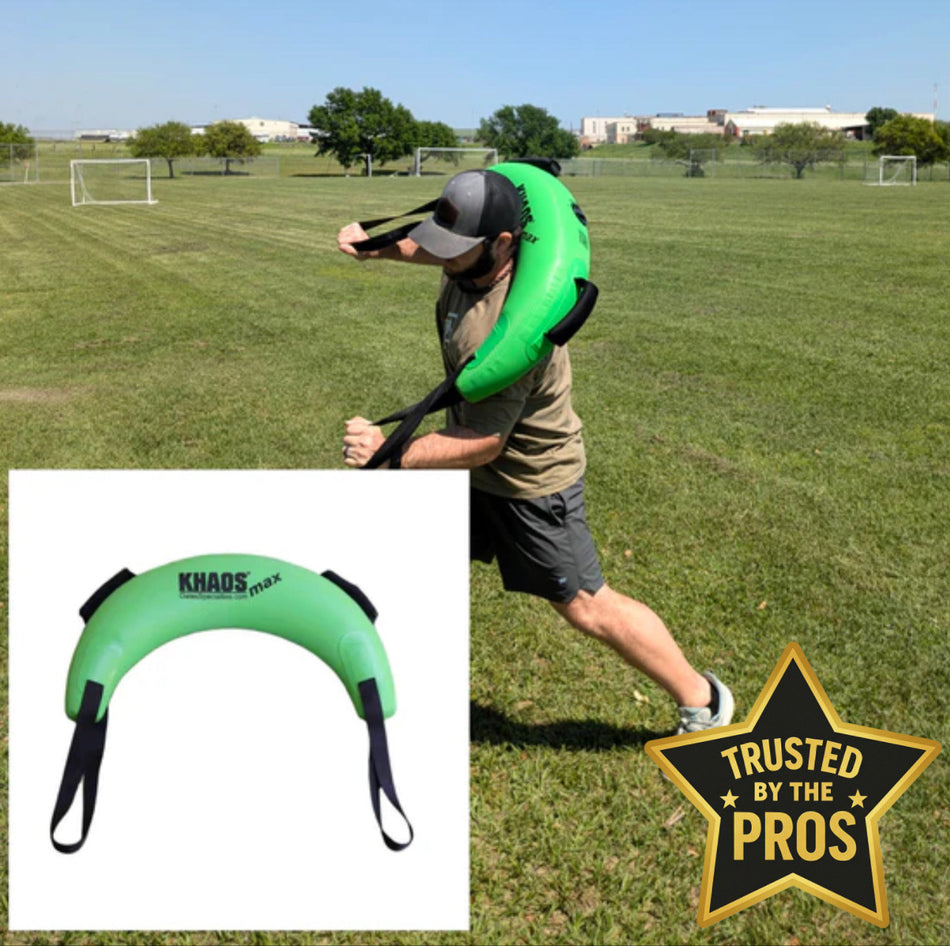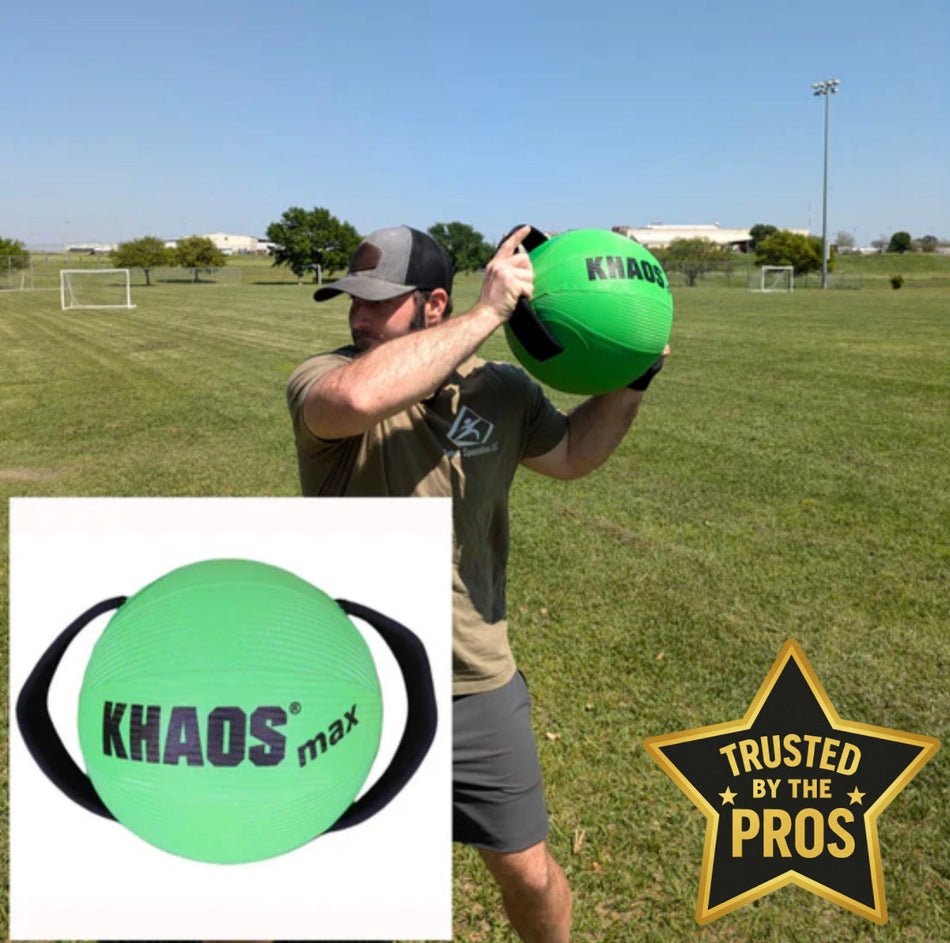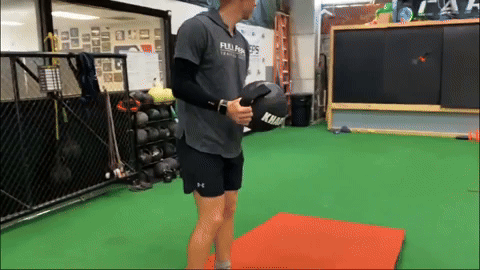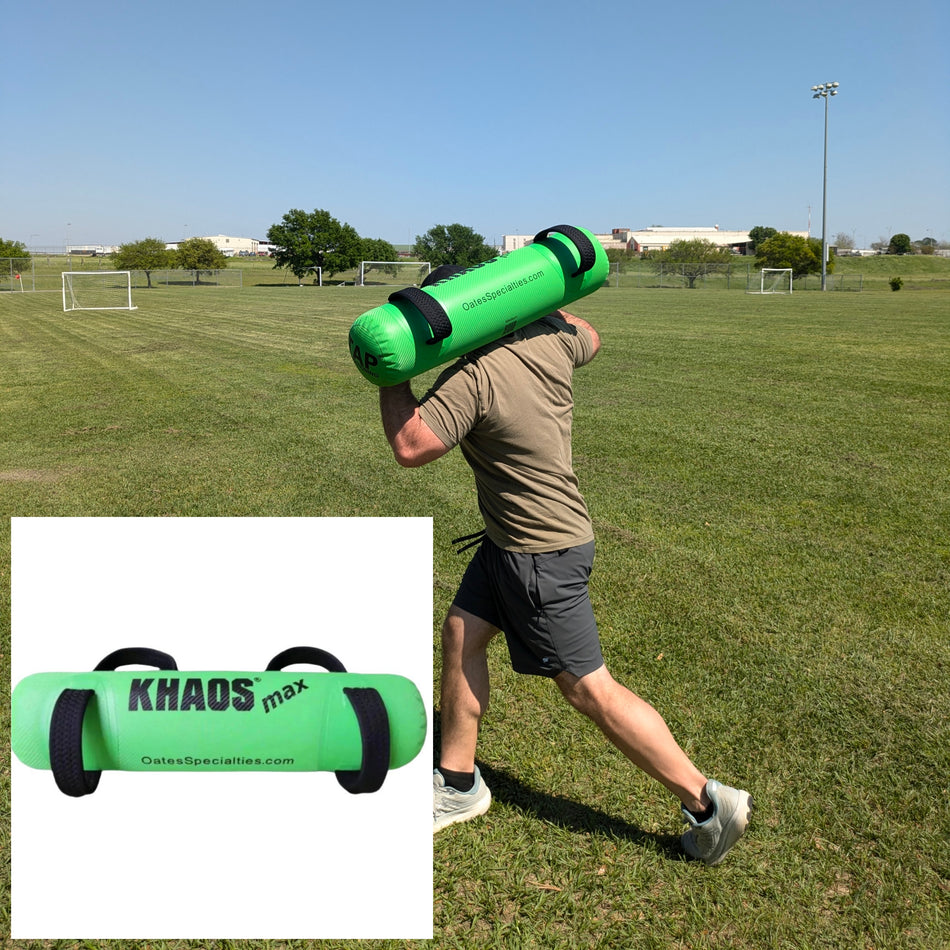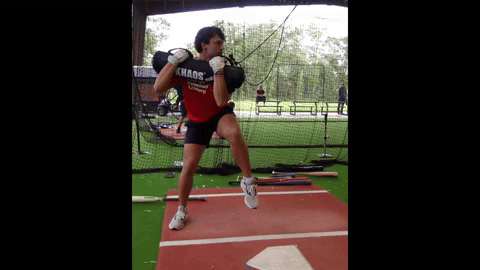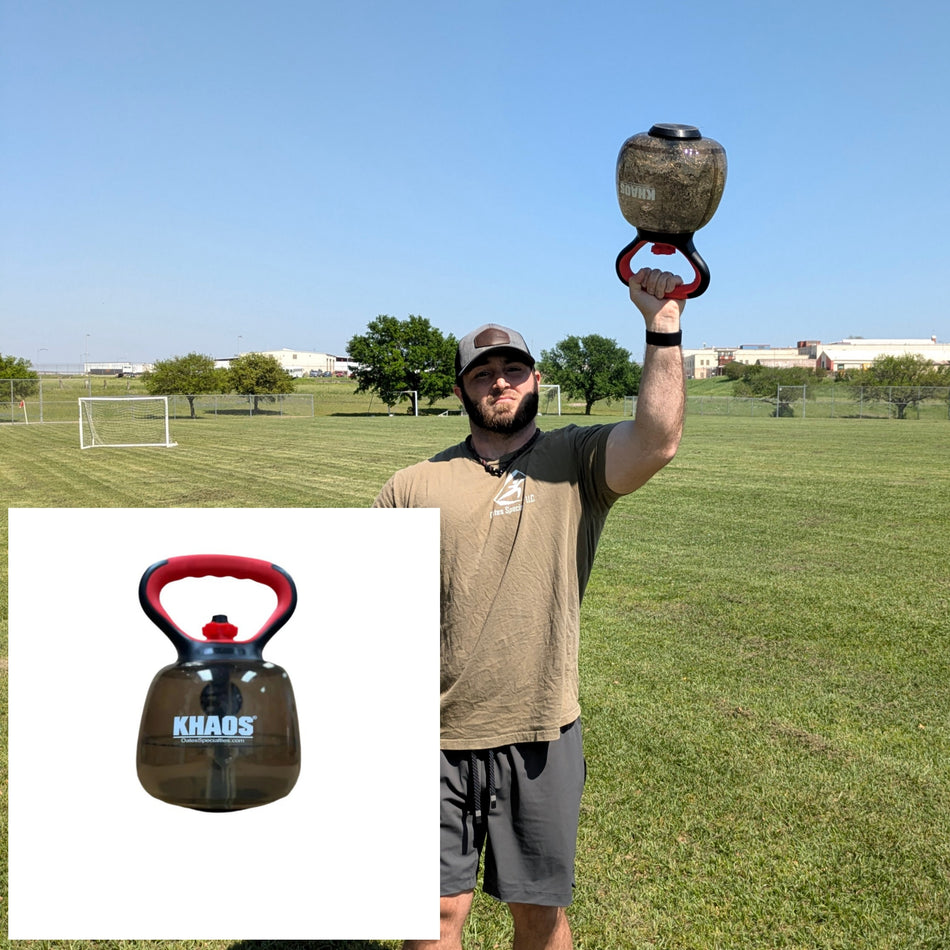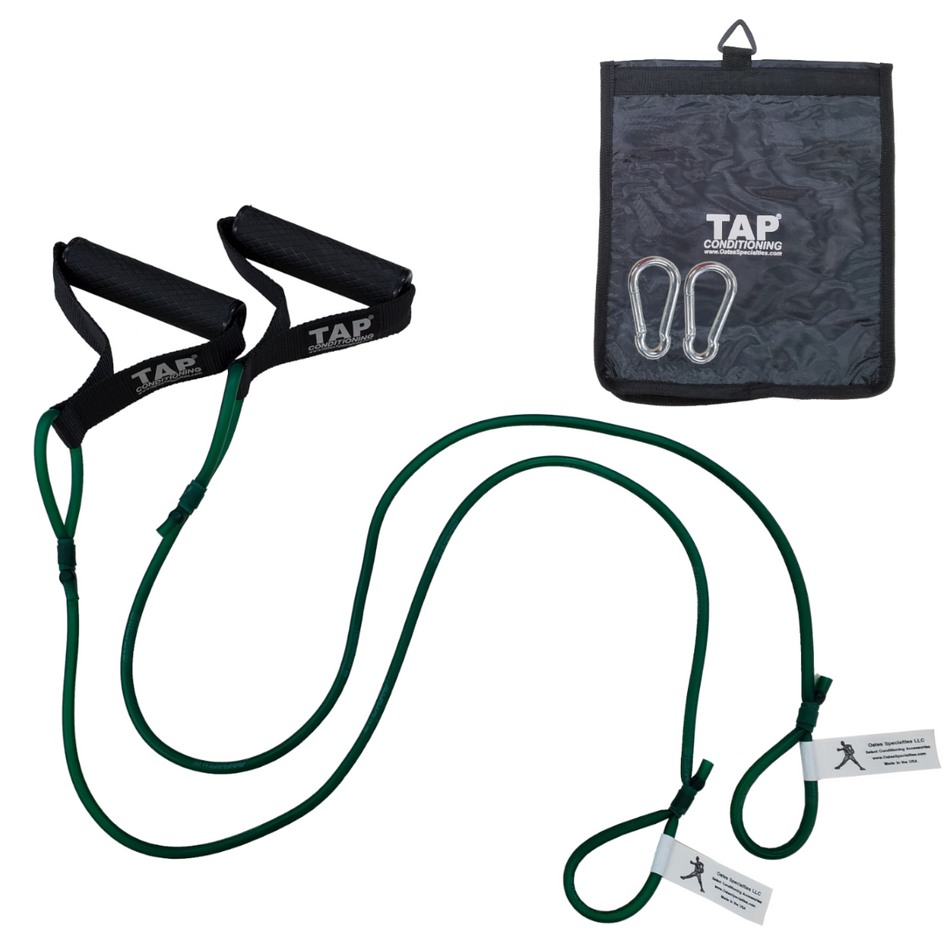Are You Stuck? It’s Time to Make a Change to Maximize Shoulder, Core, and Grip Strength
Hey baseball players, coaches, and parents! The offseason is your critical time to build the strength, power, and endurance needed to dominate on the diamond. In-season training and maintenance will then keep you sharp. Is shoulder, core, or grip strength limiting you from throwing harder, hitting farther, being more consistent, or breaking off wicked off-speed pitches? If you're tired of doing the same things year after year and getting the same results, it's time for a change.
The Dynamic Rope System by Oates Specialties is your go-to tool for both offseason development and in-season maintenance. It's specifically designed for baseball's overhead throwing motion and rotational swings, with benefits that extend to volleyball, tennis, and golf too. Unlike traditional battle ropes used for waving or slamming, this system focuses on controlled, sport-specific pulls against chaotic (accommodating) resistance – movements that better translates to higher performance. With a limited-time 10% off retail pricing, it’s more affordable than ever to train smarter and ignite your progress. Let's break down how it transforms your game, backed by science and athletes’ experiences.
What's in the Dynamic Rope System?
The Dynamic Rope System combines two powerful tools from Oates Specialties:
- Short Heavy Rope: A 1.5-inch diameter, 12-foot polypropylene rope, ideal for explosive, short-burst, rope-only movements and faster, isolated workouts. It targets shoulders, core, and legs, boosting explosive power and fixing arm imbalances. Priced at $24.95, it’s durable for indoor or outdoor use and ideal for baseball athletes. Other lengths and diameters available upon request.

- TAP® Giant Flat Band: A 1/2-inch x 41-inch loop band (up to 35 lbs resistance, Heavy Black) for dynamic stretching and strength training. It enhances flexibility and power for pitching and hitting, starting at $9.95. Other sizes (e.g., 1 1/8-inch, up to 50 lbs) available upon request.

Together, the Short Heavy Rope and TAP® Giant Flat Band form the Dynamic Rope System, delivering high-intensity workouts that emphasize slow, controlled movements against chaotic resistance—unpredictable tension from an anchored band (e.g., tied to a pole or gym rack). This approach mimics the precise, dynamic challenge of a live pitch or swing, building strength, stability, and resilience, perfect for baseball.
The Problem with Expensive Pulley Systems (and Why We Solved It)
You've seen them in gyms: impressive-looking cable machines or pulley systems promising constant tension and endless exercises. And while they have their place, they come with significant drawbacks for the dedicated athlete, especially when considering baseball-specific needs:
- Sky-High Cost: Most quality pulley systems will set you back several hundreds, often thousands, of dollars. That's a huge barrier for individual athletes, small teams, or those on a budget. Our Dynamic Rope System offers comparable, if not superior, benefits for less than $50 combined!
- Constant Tension vs. Accommodating Resistance: Traditional pulleys offer constant tension, which is fine, but it doesn't fully mimic the dynamic, accelerating forces of a pitch or swing. Accommodating resistance, on the other hand, follows the natural strength curve of your body, providing lighter resistance where you are weakest and heavier resistance where you are strongest. This not only better mimics game-day movements but also emphasizes more eccentric strength, which is crucial for both performance enhancement and injury prevention in throwing and swinging motions.
- Limited Attachment Options (Often Extra Cost): Many systems require you to buy specialized handles, ropes, and other attachments separately, adding even more to the initial investment. Our system includes the critical rope attachment, opening up a wide variety of functional, sport-specific exercises right out of the box.
| Dynamic Rope System | Portable Pulley System | |
| Economic | ✅$34.90 | X $699+ |
| Portable | ✅ | ✅ |
| Accommodating Resistance | ✅ Resistance gets greater the farther the band is stretched | X Resistance stays the same throughout the movement |
| Versatility | ✅The rope allows for different attachment variations | X Attachments have to be purchased separately |
| Adjustability | ✅ Tension can be changed by the distance the band is from the anchor point | ✅ Turn of a dial for different weights |
Why It’s Different from Battle Ropes
Unlike traditional battle ropes, which are long (30–50 feet), heavy, and designed for wave-based metabolic conditioning focused on explosive endurance in large spaces, the Dynamic Rope System offers distinct advantages, primarily through its emphasis on controlled, sport-specific strength and power:
- Smaller Footprint & Portability: The Dynamic Rope System's shorter 12-foot rope and 41-inch band require minimal space (e.g., a garage or field corner), making it highly portable and ideal for team practices or individual home use.
- More Economical: Priced at $34.90 combined (before the 10% off offer), it’s significantly more affordable than battle ropes ($100–$200).
- Focus on Controlled Strength & Power: While traditional battle ropes often emphasize explosive endurance and metabolic conditioning through wave-based movements, the Dynamic Rope System focuses on controlled, sport-specific pulls for enhancing baseball-specific strength and power. This controlled approach better translates to game-day demands.
- Enhanced Core Stabilization: It provides a higher degree of core engagement compared to typical battle rope exercises, especially with the opportunity to asymmetrically load one side. This makes movements tougher to control, greatly enhancing the core's stabilization effect.
| Dynamic Rope System | Battle Ropes | |
| Portable | ✅ | X |
| Space | ✅ 12ft of Rope and 41” band allowing for use in limited space | X 30,40,50+ft of rope not suitable for limited space |
| Core Engagement | ✅The band constantly pulls the rope back to anchor forcing the athlete to brace core at all times. It can also be used asymmetrically to really engage the core. | X Some core strength required to balance, but not a high demand of activation |
| Skill Specific | ✅ The band combined with the rope allows more degrees of motion which allows for skill specific activities | X Great general fitness tool for grip and shoulder strength but is limited by the anchor point which restricts skill specific movements |
Why It’s a Game-Changer for Baseball
The Dynamic Rope System’s exercises—jumping rope, rotational arm swings, baseball swing pull, over-shoulder pulls, hand-over-hand pull, pull-ups/push-ups, and rope climb—mimic pitching and hitting motions. Athletes report improved strength and performance from similar rope-based training, with pitchers noting enhanced shoulder durability and hitters gaining swing power (Wilk et al., 2021). Here’s how it boosts your game, with perks for volleyball, tennis, and golf.
Power Up Your Pitching (Overhand Movements)
Pitching demands strong shoulders and grip. Rotational arm swings mimic the overhand motion with twirling-like arcs, strengthening deltoids and rotator cuffs for velocity and control. Over-shoulder pulls and hand-over-hand pull against the anchored band build grip strength, like gripping a ball during a pitch’s follow-through. Studies show short-duration rope exercises enhance power and grip (Stone et al., 2018). The band’s chaotic resistance mimics game intensity, forcing the athlete to stabilize during the transition phases up the kinetic chain in pitching. A 2023 study showed rope jumping boosts coordination for young pitchers, also aiding volleyball spiking (Brini et al., 2023). Unilateral exercises reduce arm imbalances, critical for pitching health (Calatayud et al., 2015).
Crush Your Swings (Rotational Movements)
Hitting needs a strong core for rotational power. The baseball swing pull against the anchored band mimics your swing, building torque to crush fastballs. A 2022 study confirmed rope-based pulls boost core power, ideal for hitters (Bornath & Kenno, 2022; Behm et al., 2015). The chaotic resistance also forces the athlete to stabilize at contact when hitting. Tennis and golf swings benefit similarly. Athletes perceive these exercises as directly improving swing speed and bat control (Wilk et al., 2021).
Boost Overall Strength (Club and Racquet Benefits)
Bat control requires grip and forearm strength, like in golf or tennis. Hand-over-hand pull, rope-assisted pull-ups, and rope climb enhance grip and forearms. A 2024 study showed rope training improves endurance for extra innings or long tennis matches (Fountaine & Schmidt, 2024). Players report greater confidence in grip strength for sustained performance (Youdas et al., 2010).
Backed by Science
The Dynamic Rope System’s unique design combines rope and band exercises, requiring analogous studies of battle ropes and resistance bands to validate its benefits:
- Full-Body Workout: Engages shoulders, core, arms, and legs (Ratamess et al., 2015).
- Core Stability: Enhances swing balance and the ability to accept and transfer force (Behm et al., 2015).
- Independent Arm Training: Fixes uneven arm strength (Calatayud et al., 2015).
- Grip Strength: Improves bat control and pitching endurance (Youdas et al., 2010).
- Athlete Perception: Players report enhanced strength and performance (Wilk et al., 2021).
Studies show rope training burns calories for lean performance (Fountaine & Schmidt, 2024).
How to Use It
Anchor the flat band to a sturdy pole or gym rack for pulls. Exercises include:
- Jumping Rope: Boosts cardio for fielding.

- Rotational Arm Swings: Strengthens shoulders for pitching with twirling-like motions.


- Baseball Swing Pull: Enhances hitting power and core rotation.


- Over-Shoulder Pulls: Builds pitching strength and the ability to accept force.
- Hand-over-Hand Pull: Improves grip.
- Pull-Ups/Push-Ups: Strengthens upper body.


- Rope Climb: Boosts grip endurance.


Tips for Coaches and Parents
Coaches: Use baseball swing pull for hitters and over-shoulder pulls for pitchers. Adjust intensity for youth to high school teams. In-season and offseason, use jumping rope for warm-ups or recovery. Focus on teaching athletes to accept and transfer force through their core and shoulders during these movements.
Parents: Safe for kids, low-impact exercises protect joints. Guide form for max results.
Shop Now and Save 10%!
Get ready for opening day with the Dynamic Rope System—your tool for stronger pitches, harder swings, and injury-free play. It will help you improve your shoulder health, core power, grip strength, and ability to accept and transfer force – the keys to dominating the diamond. Ships with a 1/2-inch x 41-inch Giant Flat Band and 1.5-inch x 12-foot rope (other sizes available upon request). For a limited time, enjoy 10% off retail pricing—just $31.41 combined! Shop now and train smarter. Want the science? Read our technical paper.
The Dynamic Rope System: A Synergistic Approach for Athletic Off-Season Training and In-Season Maintenance for Baseball and Related Sports
Abstract
The Dynamic Rope System integrates two established fitness tools to provide a versatile training modality optimized for baseball, with secondary benefits for overhand (e.g., volleyball), rotational (e.g., tennis, cricket), club (e.g., golf), and racquet (e.g., tennis, badminton) sports. This paper evaluates the system's biomechanical and physiological benefits for off-season training and in-season maintenance, emphasizing the synergistic effects of combining high-intensity exercises with chaotic resistance from an anchored position. Key exercises, including jumping rope, rotational arm swings, pulls from various body positions, and rope climbs, target full-body power, core stability, grip strength, independent arm strength, and ATP energy system development. Supported by recent research (2010–2024) and athlete perceptions, the system demonstrates significant improvements in strength, endurance, coordination, and injury prevention, making it an effective tool for baseball-specific conditioning.
Introduction
Off-season training is critical for baseball athletes to enhance physical conditioning and prepare for competitive seasons. The Dynamic Rope System, developed by Oates Specialties, combines two existing fitness tools into a cohesive training package. Unlike traditional battle ropes, which focus on wave-based metabolic conditioning, and unlike pulley/cable systems, which are really expensive and lack accommodating resistance, this economical system emphasizes controlled pulls against chaotic resistance, mimicking baseball’s overhand and rotational demands. This paper examines the system’s genesis, biomechanical and physiological benefits, and efficacy for baseball, with secondary applications for related sports, supported by peer-reviewed research and athlete perceptions of strength and performance improvements.
Genesis and Components of the Dynamic Rope System
The Dynamic Rope System originates from two standalone products available at Oates Specialties:
- Short Heavy Rope: Designed for high-intensity interval training (HIIT), it facilitates short-duration exercises (e.g., 12-second bursts) that enhance explosive power, core stability, grip strength, and independent arm strength while correcting imbalances and improving shoulder mobility. Other lengths and diameters available upon request (Oates Specialties, n.d.-a).
- TAP® Giant Flat Band: Supports dynamic stretching, strength development, and sport-specific training, improving flexibility, conditioning, and explosive power. Other sizes available upon request (Oates Specialties, n.d.-b).
The system synergizes these tools by combining the rope’s high-intensity, full-body exercises with the band’s chaotic resistance—unpredictable tension from an anchored position (e.g., secured to a pole or gym rack). This combination offers:
- Enhanced Stabilization: The anchored band’s chaotic resistance requires greater core and stabilizer muscle engagement, mimicking dynamic baseball demands (Bornath & Kenno, 2022).
- Sport-Specific Simulation: Rope-based pulls (e.g., baseball swing pull, over-shoulder pulls) paired with band resistance replicate pitching and hitting motions (Calatayud et al., 2015).
- Injury Prevention: Independent arm exercises and dynamic stretching reduce imbalances and enhance joint mobility (Brini et al., 2023).
- Scalability: Adjustable resistance and compact design suit diverse athletes and training environments, requiring less space than traditional battle ropes (Fountaine & Schmidt, 2024).
The system’s unique design, combining short-rope pulls with anchored band resistance, lacks direct research, necessitating analogous studies on battle ropes and resistance bands to validate benefits (Stone et al., 2018; Youdas et al., 2010).
Biomechanical and Physiological Benefits
The Dynamic Rope System’s exercises, demonstrated in the training video (https://youtu.be/GvcP98JOijA), align with baseball’s biomechanical demands, particularly overhand (pitching) and rotational (hitting) movements, with secondary benefits for related sports. Athletes report enhanced strength and performance from similar resistance training, perceiving improvements in throwing and hitting (Wilk et al., 2021).
Baseball: Overhand Movements (Pitching)
Baseball pitching requires shoulder strength, mobility, grip strength, and explosive power. Rotational arm swings with twirling-like motions and over-shoulder pulls against the anchored flat band engage the deltoids, rotator cuff, latissimus dorsi, and forearms, improving shoulder stability, power, and grip (Calatayud et al., 2015). The band’s chaotic resistance enhances stabilization, mimicking game-like intensity. A 2023 study found weighted rope jumping improved coordination and lower-body strength in adolescent athletes, supporting pitching performance (Brini et al., 2023). Athletes perceive resistance training as enhancing throwing velocity and durability (Wilk et al., 2021).
Baseball: Rotational Movements (Hitting)
Baseball hitting demands core stability and rotational power. The baseball swing pull against the anchored flat band targets the obliques, rectus abdominis, and transverse abdominis, enhancing torque generation (Behm et al., 2015). A 2022 study confirmed rope-based pulls improve upper-body power and core strength (Bornath & Kenno, 2022). Athletes report improved swing speed and bat control with similar training (Wilk et al., 2021). These benefits extend to tennis and golf swings.
Club and Racquet Sports (e.g., Golf, Tennis)
Club and racquet sports rely on grip strength and rotational force. The baseball swing pull, hand-over-hand pull, and rope climb strengthen forearms and lats, supporting bat/racket control (Youdas et al., 2010). The band’s chaotic resistance intensifies exercises, aligning with findings that rope training enhances shoulder and grip strength (Stone et al., 2018). Athletes perceive grip-focused exercises as improving performance under fatigue (Wilk et al., 2021).
Overhand and Racquet Sports (e.g., Volleyball, Badminton)
Overhand and racquet sports require unilateral arm strength, grip, and agility. Rotational arm swings and jumping rope improve arm endurance, grip, and coordination, reducing imbalances (Calatayud et al., 2015). A 2024 study highlighted rope training’s high metabolic cost, supporting endurance for matches (Fountaine & Schmidt, 2024).
Physiological Outcomes
The Dynamic Rope System targets the ATP-phosphagen system, crucial for explosive baseball efforts. High-intensity exercises (12-second bursts) elevate heart rate to 85–90% of maximum, enhancing cardiovascular fitness and metabolic demand (Fountaine & Schmidt, 2024). The system’s low-impact nature minimizes joint stress, suitable for all ages (Brini et al., 2023). Grip-intensive pulls enhance forearm endurance, critical for bat control and pitching (Youdas et al., 2010). Athletes report confidence in sustained performance due to improved strength (Wilk et al., 2021).
Practical Applications
The system’s exercises, shown in the training video (https://youtu.be/GvcP98JOijA), include:
- Jumping rope: Enhances lower-body power and coordination.
- Rotational arm swings: Improves unilateral shoulder strength with twirling-like motions.
- Baseball swing pull: Boosts core stability and rotational power against anchored band resistance.
- Over-shoulder pulls: Enhances pitching strength with chaotic resistance.
- Hand-over-hand pull: Strengthens grip and forearms.
- Pull-ups/push-ups: Strengthens upper body and core.
- Rope climb: Enhances grip and shoulder endurance.
The anchored flat band’s chaotic resistance, used in pulls, increases stabilization demands, mimicking baseball-specific dynamics. The system’s compact design requires less space than battle ropes, making it ideal for team or individual use (Fountaine & Schmidt, 2024).
Conclusion
The Dynamic Rope System is a highly effective tool for off-season baseball training and in-season maintenance, with benefits for overhand, rotational, club, and racquet sports. Its synergistic design, supported by analogous research and athlete perceptions, demonstrates improvements in strength, power, endurance, coordination, and injury prevention. Coaches and athletes can leverage its scalability and compact design to optimize performance, making it an essential training tool.
References
Behm, D. G., Drinkwater, E. J., Willardson, J. M., & Cowley, P. M. (2015). Core Muscle Activation During Dynamic Exercises. Journal of Sports Sciences, 33(14), 1492–1500. https://doi.org/10.1080/02640414.2014.990486
Bornath, A., & Kenno, K. A. (2022). Physiological Responses to Increasing Battling Rope Weight During Two 3-Week HIIT Programs. Journal of Strength and Conditioning Research, 36(1), 145–152. https://doi.org/10.1519/JSC.0000000000003417
Brini, S., Boullosa, D., Calleja-González, J., & van den Hoek, D. J. (2023). The Effects of Rope or Weighted Rope Jump Training on Strength, Coordination, and Proprioception in Adolescent Female Volleyball Players. Journal of Sports Science and Medicine, 22(2), 234–245. https://doi.org/10.52082/jssm.2023.234
Calatayud, J., Borreani, S., Colado, J. C., Martin, F., Tella, V., & Andersen, L. L. (2015). Muscle Activity During Unilateral vs. Bilateral Battle Rope Exercises. Journal of Strength and Conditioning Research, 29(10), 2854–2860. https://doi.org/10.1519/JSC.0000000000000933
Fountaine, C. J., & Schmidt, J. (2024). Metabolic Cost of Rope Training. Journal of Sports Science and Medicine, 23(1), 123–130. https://doi.org/10.52082/jssm.2024.123
Ratamess, N. A., Rosenberg, J. M., Klei, S., Dougherty, B. A., Kang, J., Smith, C. R., & Faigenbaum, A. D. (2015). Acute and Chronic Physiological Responses to Battle Rope Training. Journal of Strength and Conditioning Research, 29(10), 2743–2751. https://doi.org/10.1519/JSC.0000000000000922
Stone, M. H., Hornsby, W. G., Haff, G. G., Fry, A. C., Suarez, D. G., & Cunanan, A. J. (2018). Effects of Battle Rope Training on Power Output in Collegiate Athletes. International Journal of Exercise Science, 11(4), 421–430. https://digitalcommons.wku.edu/ijes/vol11/iss4/1/
Wilk, K. E., Arrigo, C. A., Dugas, J. R., Cain, E. L., & Andrews, J. R. (2021). Perceived Effects of Resistance Training on Throwing Performance in Baseball Players. Journal of Strength and Conditioning Research, 35(6), 1542–1549. https://doi.org/10.1519/JSC.0000000000003678
Youdas, J. W., Amundson, C. L., Cicero, K. S., Hahn, J. J., Harezlak, D. T., & Hollman, J. H. (2010). Surface Electromyographic Analysis of Core and Lower Extremity Muscles During Battling Rope Exercises. Journal of Strength and Conditioning Research, 24(12), 3478–3486. https://doi.org/10.1519/JSC.0b013e3181f1f7f1
Oates Specialties. (n.d.-a). Short Heavy Rope Product Description. https://zme0le88jk6440s4-68571103454.shopifypreview.com/products/heavy-rope-short
Oates Specialties. (n.d.-b). TAP® Giant Flat Band Product Description. https://zme0le88jk6440s4-68571103454.shopifypreview.com/products/giant-flat-bands-bands-for-pullups-stretching-or-resisted-body-weight-exercises
Annotated Bibliography
Behm et al. (2015): Examines core muscle activation in dynamic exercises, showing high engagement of obliques and transverse abdominis, relevant to the baseball swing pull for hitting.
Bornath & Kenno (2022): Demonstrates battle rope HIIT’s impact on upper-body power, grip, and cardiovascular fitness, supporting pulls for baseball pitching and hitting.
Brini et al. (2023): Highlights weighted rope jumping’s benefits for coordination and strength in adolescent athletes, supporting jumping rope for baseball fielding.
Calatayud et al. (2015): Analyzes muscle activation in unilateral battle rope exercises, validating rotational arm swings for pitching.
Fountaine & Schmidt (2024): Confirms high metabolic cost of rope training, supporting all exercises for ATP energy system training in baseball.
Ratamess et al. (2015): Confirms full-body physiological responses to rope training, supporting the system’s comprehensive benefits.
Stone et al. (2018): Validates power and grip strength improvements from rope training, relevant to pulls and rope climb for baseball.
Wilk et al. (2021): Reports athletes’ perceptions of improved throwing and hitting performance from resistance training, supporting all exercises.
Youdas et al. (2010): Confirms grip and forearm activation in rope exercises, supporting hand-over-hand pull and rope climb for bat control and pitching endurance.
Oates Specialties (n.d.-a): Describes the Short Heavy Rope’s design and benefits, foundational for the system’s high-intensity exercises.
Oates Specialties (n.d.-b): Outlines the TAP® Giant Flat Band’s resistance and versatility, critical for the system’s chaotic resistance component.





